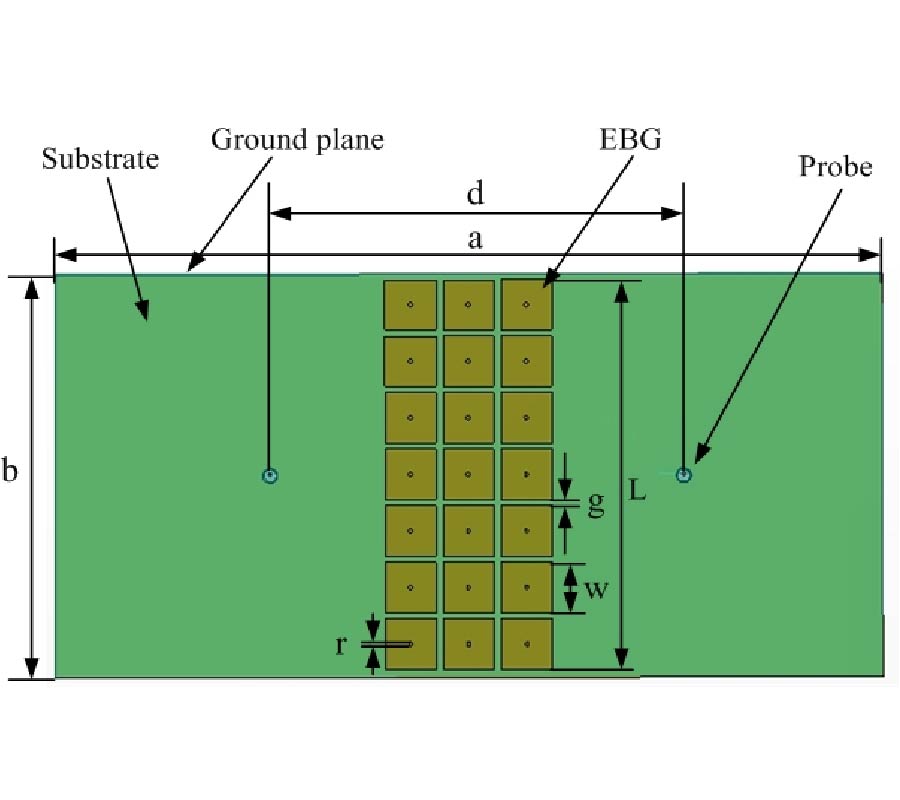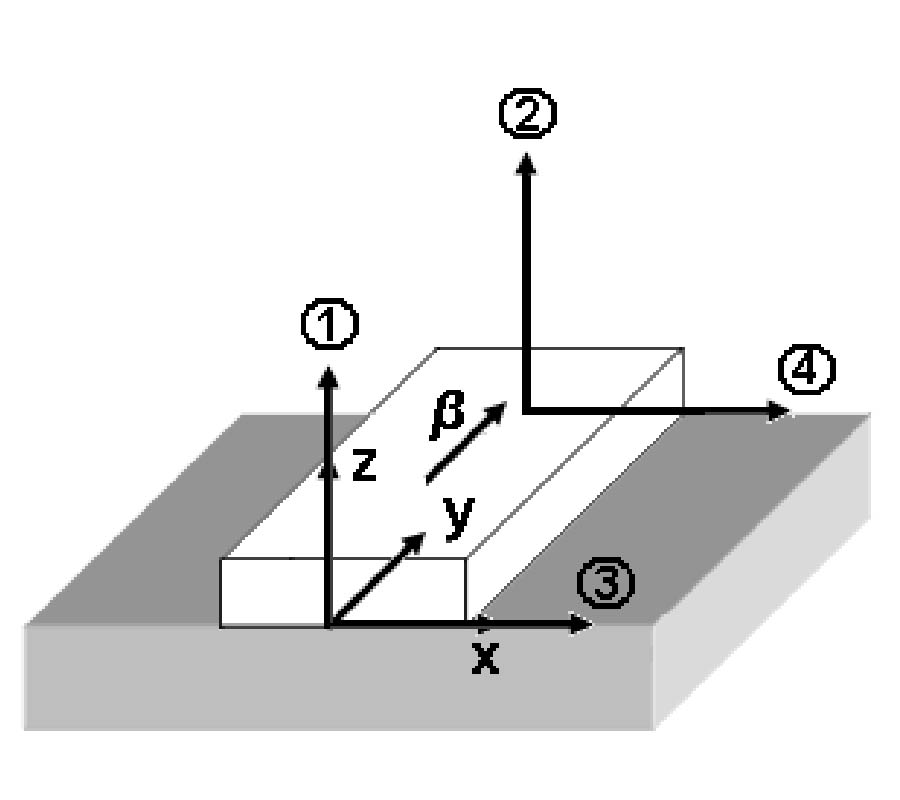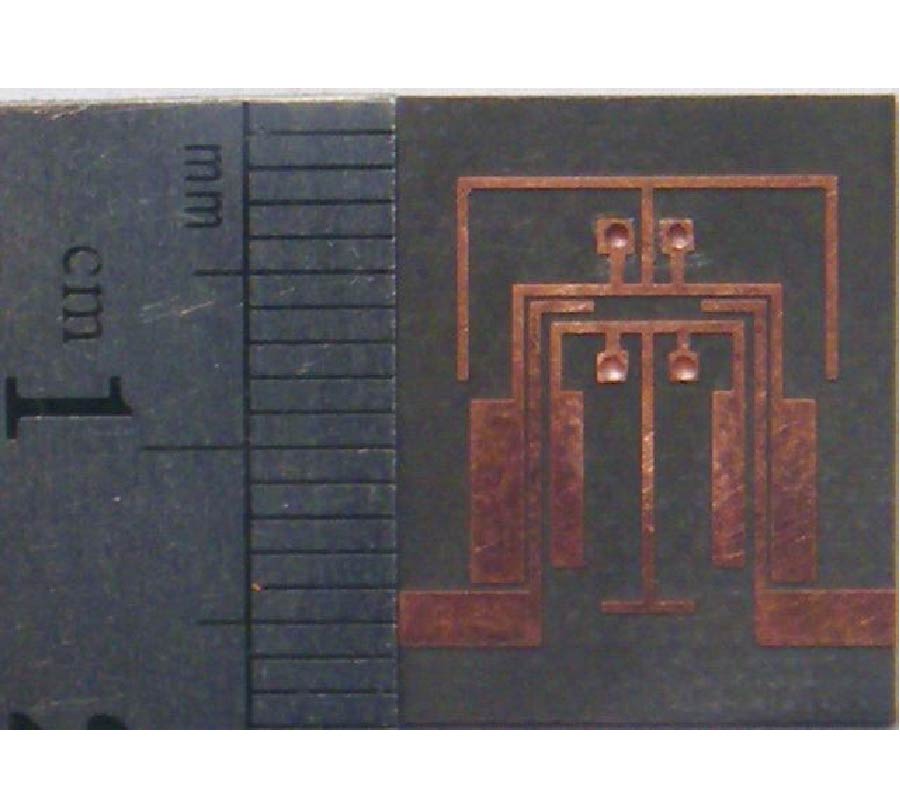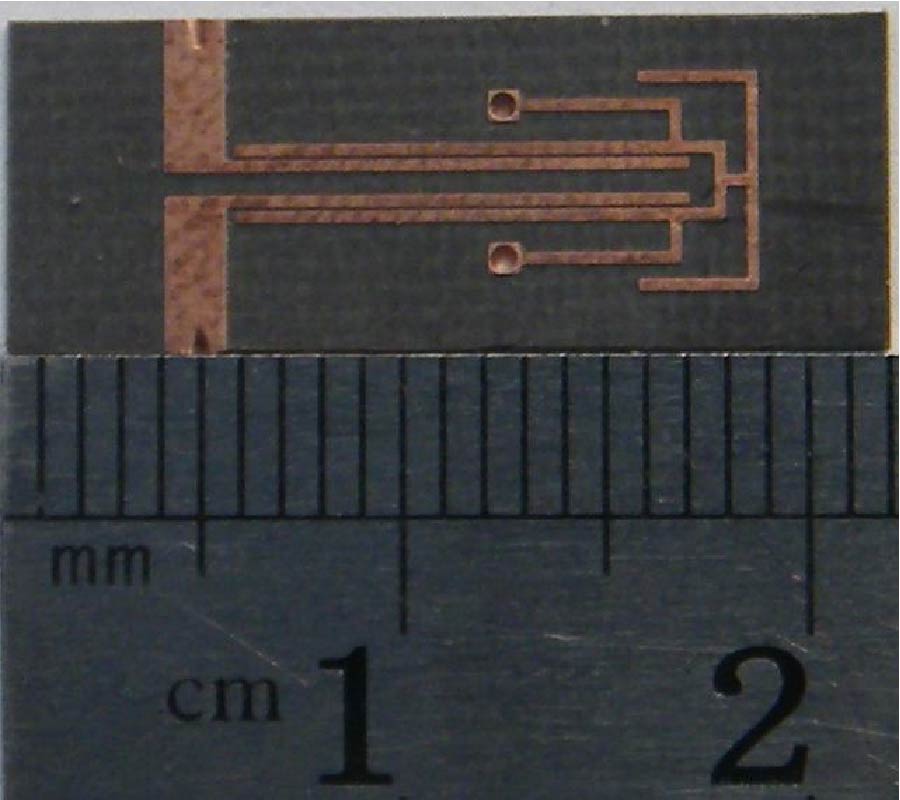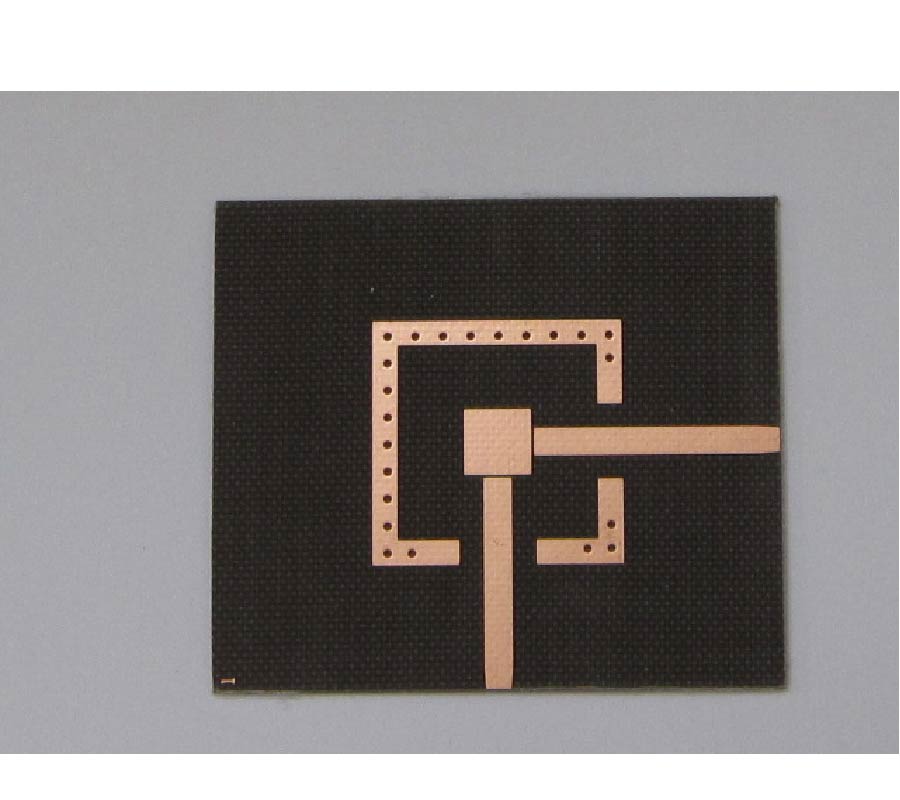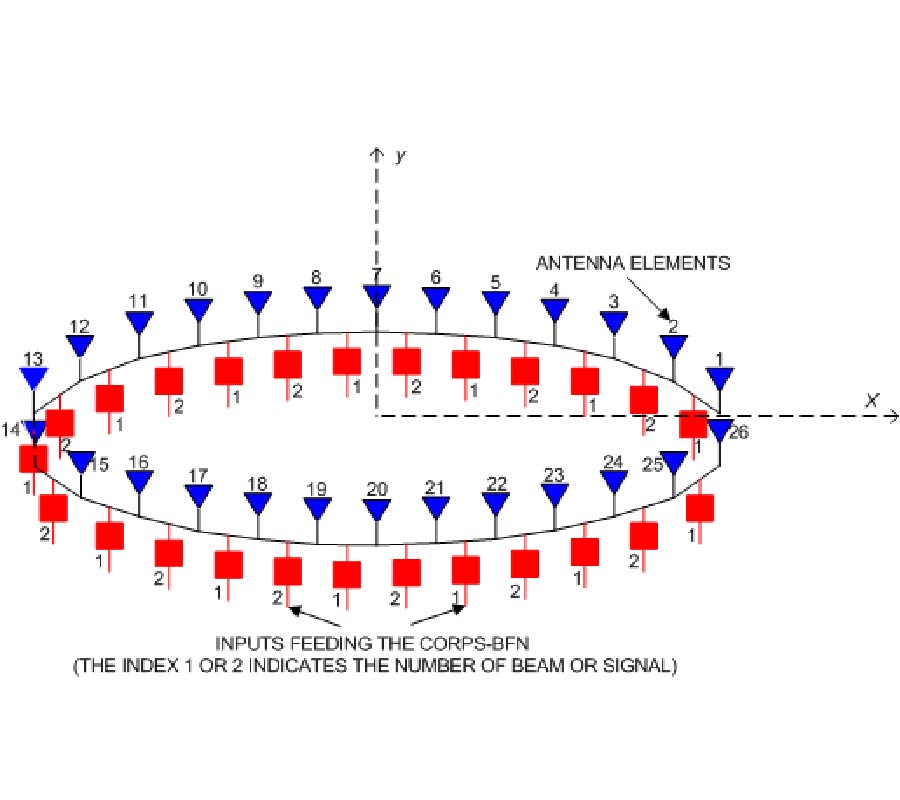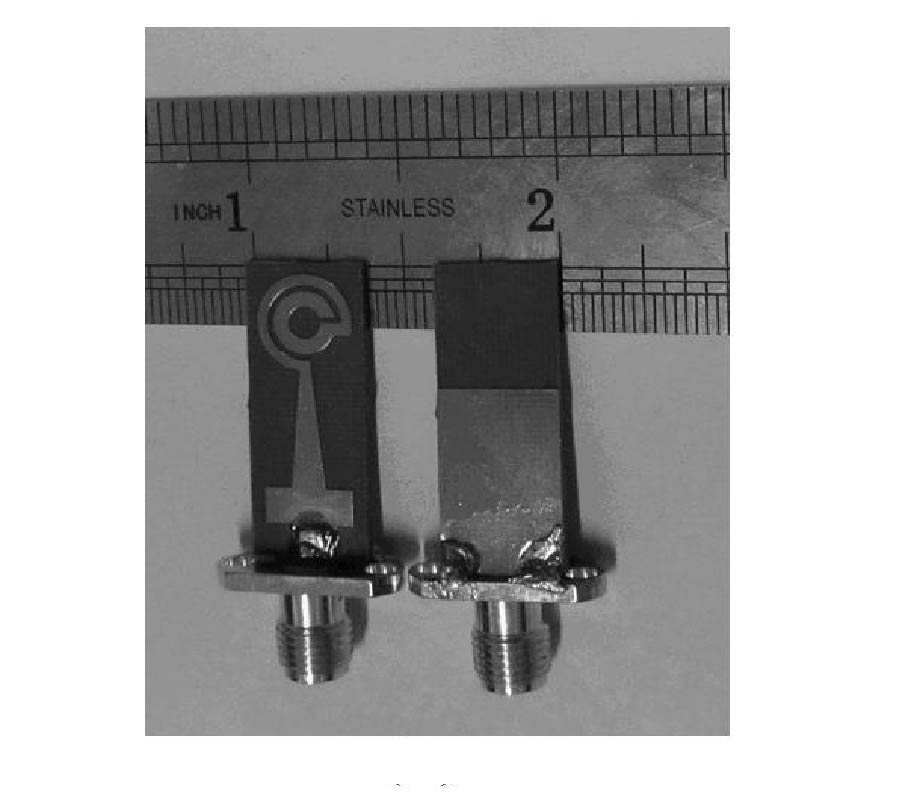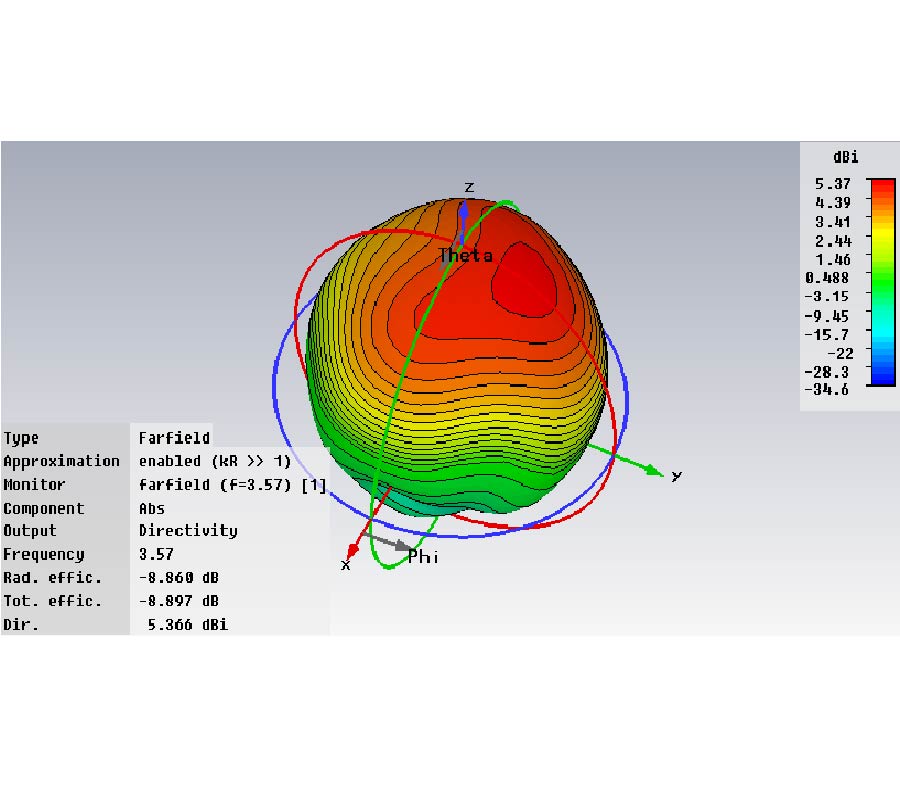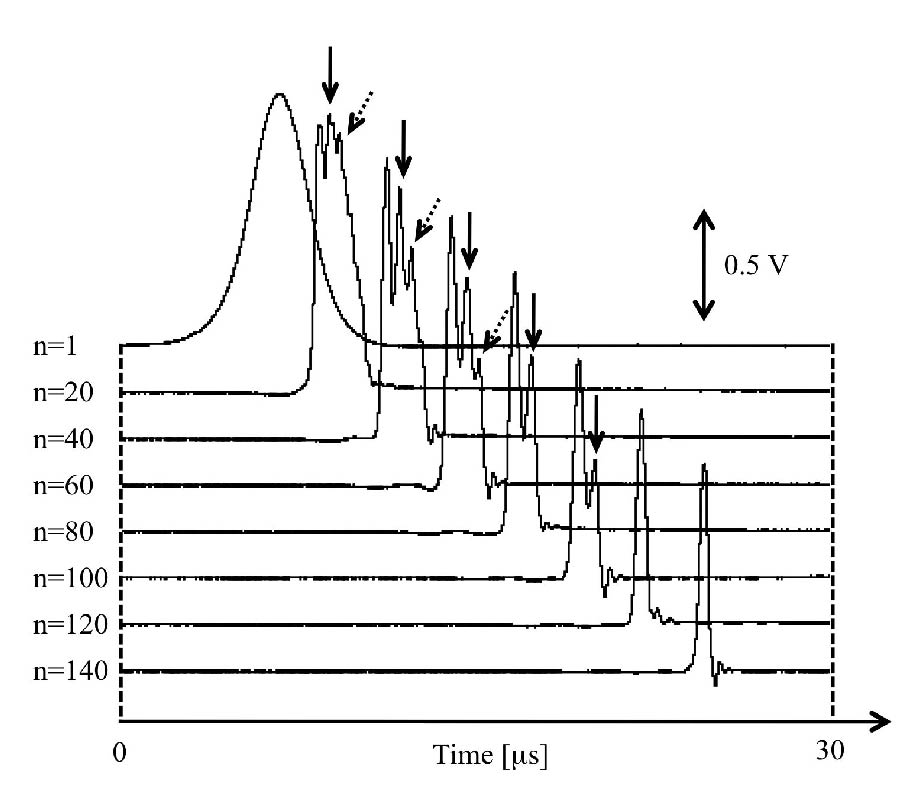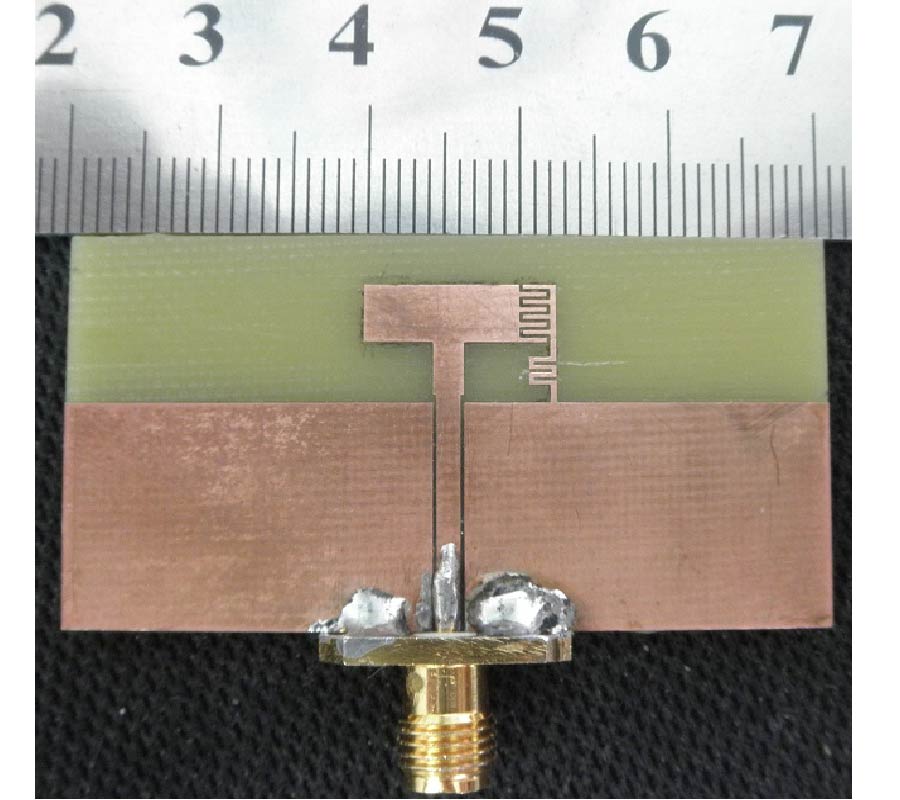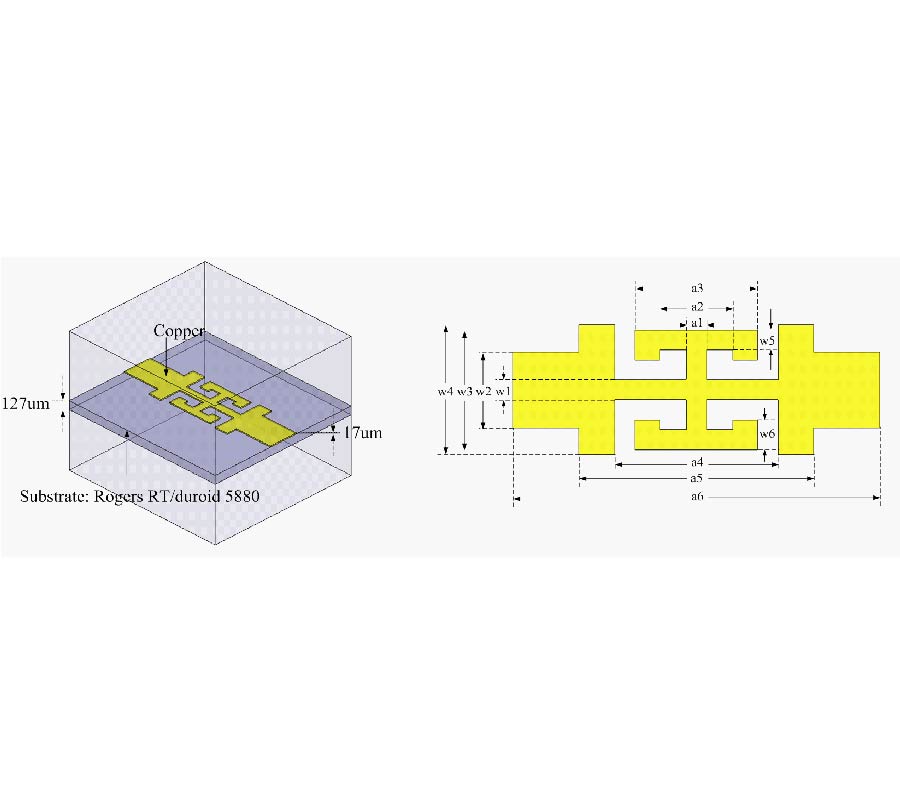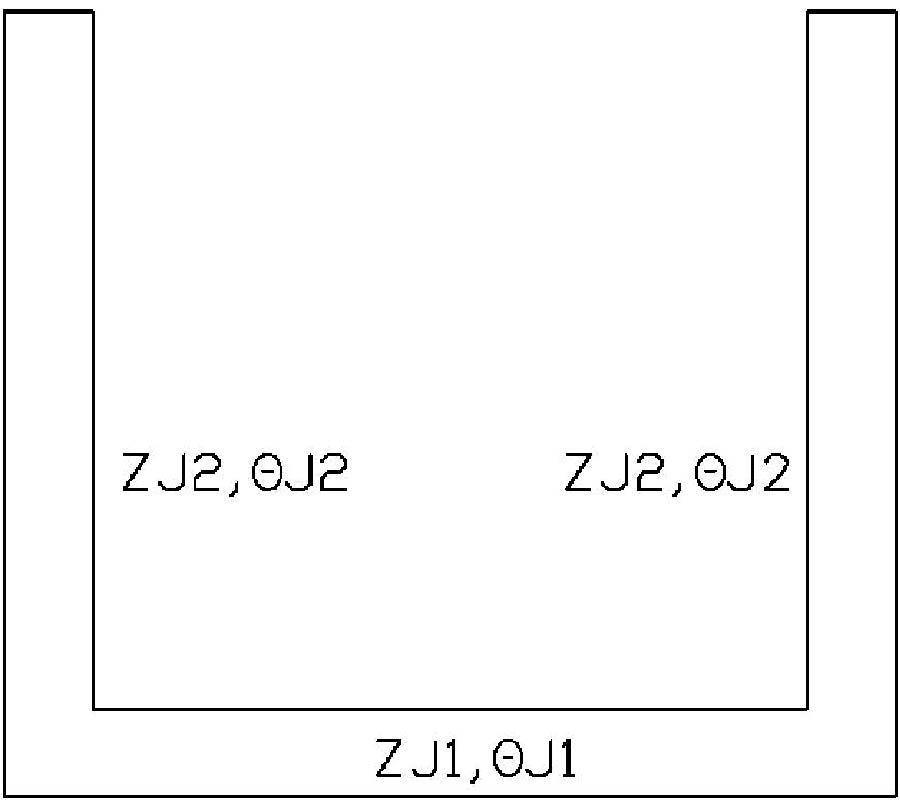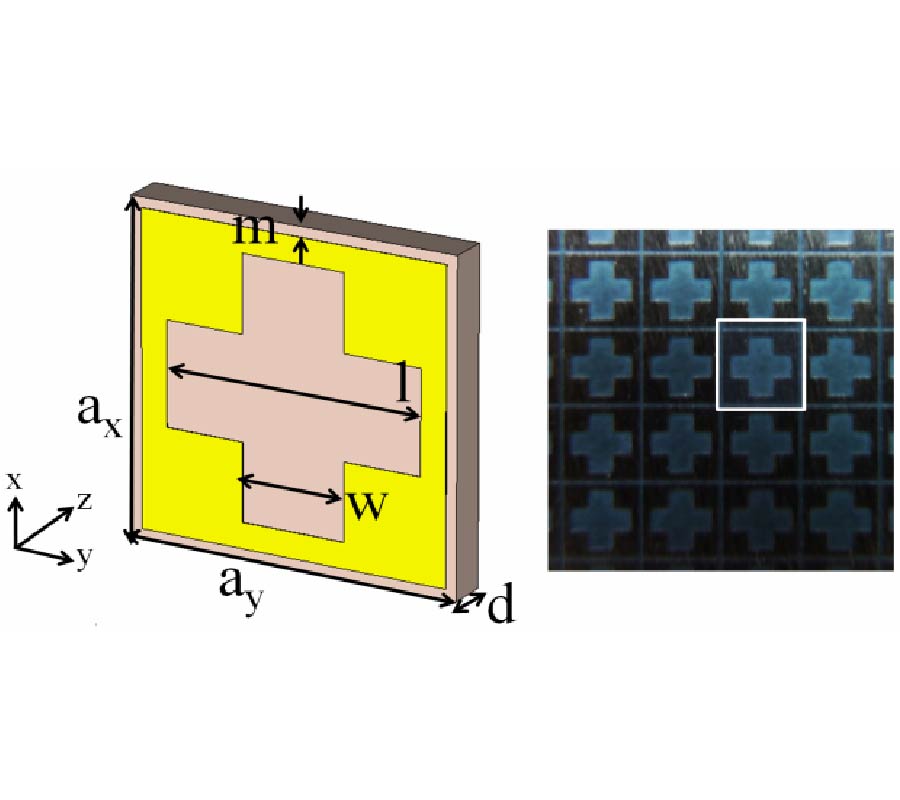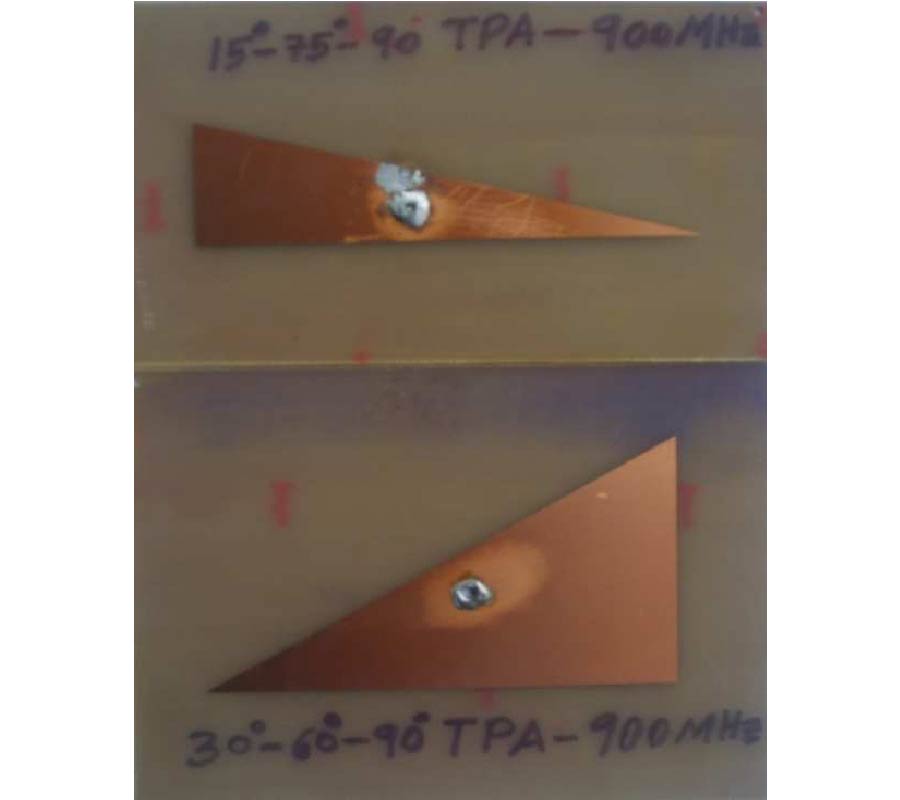A Study of 15°-75°-90° Angles Triangular Patch Antenna
Melad Marzouq Olaimat
and
Nihad I. Dib
In this paper, a triangular patch antenna (TPA) with 15°-75°-90° angles is studied. The simulation results, using the full wave simulator, IE3D, for this TPA shape are compared with those for the equilateral triangular patch antennas (ETPA), the right angle isosceles triangular patch antenna (RAITPA), the 30°-60°-90° TPA and 30o-30o-120° TPA. It is found that for the same resonant frequency, the 15°-75°-90° TPA occupies the least area among these triangular shapes. In an attempt to verify the simulation results, a 15°-75°-90° TPA operating at 900 MHz is designed, fabricated, and measured. The measured value for the resonance frequency is very close to the value obtained by simulation. Finally, a 15°-75°-90° TPA with a shorting pin is investigated. As expected, a miniaturized patch is obtained by loading a shorting pin at the tip of the patch.
